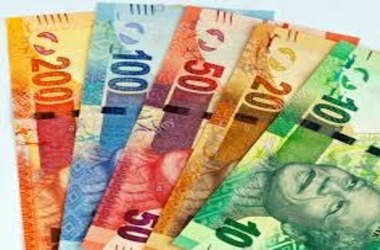 The South African rand posted a new historical low of 18.278 against the greenback, with investors selling off most vulnerable assets and moving to safe haven assets as the outbreak of Covid-19 has increased worries about the currently feeble economy.
The South African rand posted a new historical low of 18.278 against the greenback, with investors selling off most vulnerable assets and moving to safe haven assets as the outbreak of Covid-19 has increased worries about the currently feeble economy.
The rand witnessed heavy sell off Monday after Moody’s downwardly revised the nation’s sovereign debt to ‘junk’ status, pointing to continuously sluggish growth, quickly increasing debt and the effect of an untrustworthy power supply.
The selloff began after Moody’s downwardly revised the rating by one notch to Ba1 from Baa3 and left the negative outlook unaltered.
It can be remembered that S&P Global and Fitch downwardly revised Africa’s industrialized economy to sub-investment grade three years back.
The intensity of the rand sell off is also fueled by crude oil price rout that triggered a selloff across the globe, particularly in emerging markets.
The rand has lost over 20% in the past two months as investors have sold over 50 billion rand worth domestic bonds and the market cap of the stock exchange has plummeted by 4.50 trillion rand.
In the meantime, bonds have slightly recovered, with the yield on 10-year government paper redeemable in 2030 declining 3.5 basis points to 11.61%, short of last week’s high of 13.25%.
One main criteria that has slowed down the selloff was the central bank’s announcement to roll out a ‘quantitative easing’ kind of bond purchase program and to ease repo terms for retail banks, boosting demand and restricting the surge in the yield curve.
The coronavirus linked selloff that the country saw already in the weeks before the downward revision.
South African bonds have taken a place in the growing range of high yielding debt in an environment of rate reduction by emerging economies against the background of a slowdown that is on track to push the worldwide economy into a steeper downturn than what was witnessed in the 2008-09 financial crisis.
Kieran Siney of ETM Analytics warned that the market has already accounted for the rating downgrade.
“I would be cautious of turning overly bearish on the rand given the risk of a downgrade was baked into the local currency.”
Moody’s downward revision of rating will result in South Africa getting evicted from the benchmark World Government Bond Index (WGBI) of domestic currency debt at the end of April, sparking a maximum of $12 billion of compelled selling, as per estimate of treasury and currency strategists.
However, some economists anticipate a weaker outflow, with hot money following high yields probably to acquire a portion of surplus supply.
While pointing out that all asset managers do not follow the same strategy, Cristian Maggio of TDM Securities stated that valuations has turned attractive due to coronavirus.
“Unwinding will follow different rules for different asset managers and there may not be a rush into selling. So while some investors may be selling, others will be buying. Therefore, we may see limited, if anything, moves in the bond space.”
Another criteria that may probably protect bonds from a continuous and heavy selloff is the comparatively high rate of return, or yield on South African debt, as against peers with equivalent rating.
Eugene Visagie, portfolio manager at Morningstar Investment Management SA, said “You can buy a 10-year SA bond and earn real yield of 4.7% compared to a 10-year Brazilian bond that only pays 2.6%. Brazil has been sub-investment since 2016.”
Visagie stated that exit from WGBI implies South Africa will be placed in sub-investment grade indices, such as the Global High Yield Index, where it would carry a higher weightage.
He further stated that the recent surge in bond yields to roughly 12% had boosted the real yield to roughly 7.5%, turning government bonds “an excellent investment opportunity”.




